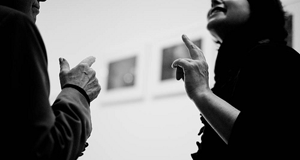 Implicit Bias is more than just a hot topic that surfaced during the 2016 presidential campaign. Implicit bias is real and it negatively impacts the lives of marginalized individuals every day across our country. The Kirwan Institute at The Ohio State University defines implicit bias as ”[T]he attitudes or stereotypes that affect our understanding, actions, and decisions in an unconscious manner. These biases, which encompass both favorable and unfavorable assessments, are activated involuntarily and without an individual’s awareness or intentional control.”[i] Some of the key characteristics of implicit bias include that everyone has them; they are generally not an indication of our beliefs or our values; and they are malleable.
Implicit Bias is more than just a hot topic that surfaced during the 2016 presidential campaign. Implicit bias is real and it negatively impacts the lives of marginalized individuals every day across our country. The Kirwan Institute at The Ohio State University defines implicit bias as ”[T]he attitudes or stereotypes that affect our understanding, actions, and decisions in an unconscious manner. These biases, which encompass both favorable and unfavorable assessments, are activated involuntarily and without an individual’s awareness or intentional control.”[i] Some of the key characteristics of implicit bias include that everyone has them; they are generally not an indication of our beliefs or our values; and they are malleable.
During a trip to Chicago last year, I stopped at a busy intersection. As the car came to a complete stop, I noticed my white friend in the passenger seat, ever so subtlety, lock the doors to our car. I quickly glanced past his head to see a group of young people gathered on the corner, just feet from our car. When I saw the racial makeup of the group, I had a feeling that I knew what was happening. When I asked my friend why he had locked the doors, he could only offer that he felt unsafe. I asked him why he felt uncomfortable with this group of young African American males when we had stopped several times before with various groups assembled on corners. I asked him where the idea of “not feeling safe” came from and he said, “Well, you see things on TV about being in unsafe neighborhoods.” I asked him if his implicit biases might have anything to do with his actions. He admitted that they probably did. We discussed how we often make decisions and act in ways we don’t consciously sanction. This happens because of our implicit biases—unconscious attitudes or stereotypes that affect our understanding, actions, and decisions.
At West Wind our team believes that these implicit biases and unconscious attitudes that permeate our society often result in students of color being treated differently in our schools. In May and June of 2016 a group of students in the Iowa City Community School District asked the school board to provide unconscious bias training for all teachers! Students had observed how some students were not treated equitably. They noticed that students of color (especially) had very different interactions with teachers and wanted the school board to know the emotional impact of this treatment. They surveyed students in their schools, then shared their perceptions and experiences with the board.
Students actively engaged in a process to change inequitable practices in their schools and the district responded. Shortly thereafter, they contracted with West Wind Education Policy to implement a three-year Implicit Bias & Equity project.
Just as we ALL make decisions and act based on unconscious attitudes and stereotypes, we are exploring with educators the possibility of these implicit biases playing out in the school setting. What if implicit bias is at play in the racial disproportionality we experience in academic outcomes and disciplinary actions? Data show that such disproportionalities exist across the nation for students of color. What if by understanding and overcoming implicit bias, we see improved academic achievement and reduced discipline referrals and suspensions?
Our project offers research, engagement, and opportunities for reflection as we ALL ponder “What if…?
This fall, we began year two of our project. We are pleased to again be conducting this project in tandem with the Harvard Graduate School of Education’s Reimagining Education: Diverse and Equitable Schools project. We are thrilled to have the opportunity to share more about implicit bias, its impact on students, and ways school teams can work together to overcome the negative outcomes implicit biases can have on students.
[i] Kirwan Institute for the Study of Race and Ethnicity at The Ohio State University. (2015). Understanding Implicit Bias. Retrieved from http://kirwaninstitute.osu.edu/research/understanding-implicit-bias/.
